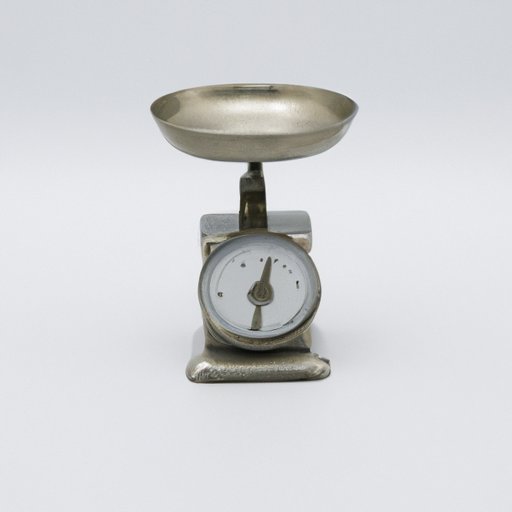
Introduction
When it comes to weight measurements, the pound is a unit that most people are familiar with. Whether you’re trying to lose weight, measure cooking ingredients, or weigh packages for shipping, understanding what a pound is and how it works is crucial. However, many people still face common problems when dealing with this measurement. In this article, we’ll explore everything you need to know about pounds as a unit of weight, from its history to its advantages and disadvantages in comparison to other measurements.
Everything you need to know about pounds as a unit of weight
The pound has a rich history as a unit of weight. In ancient times, people used naturally occurring objects such as stones and seeds to weigh items. Over time, governments and trade organizations developed standardized weight measurements, and the pound became widely recognized as a useful unit of measurement. Today, there are two main types of pounds you may encounter – avoirdupois pound and troy pound. The avoirdupois pound is the most common measurement used in everyday life, while troy pounds are typically used in measuring precious metals and gems.
It’s worth noting that a pound is different from other weight measurements, such as ounces and grams. A pound is equivalent to 16 ounces and 0.453592 kilograms. Additionally, there are different types of pounds, which can cause confusion for those who are not familiar with these distinctions.
How to convert pounds to other weight measurements
Converting pounds to other weight measurements is a common task that many people face. The most commonly used weight measurements in addition to pounds include kilograms and ounces. Here’s a brief overview of how to convert pounds to these measurements:
- To convert pounds to kilograms, multiply the weight in pounds by 0.453592. For example, 20 pounds would be equal to 9.07185 kilograms.
- To convert pounds to ounces, multiply the weight in pounds by 16. For example, 10 pounds would be equal to 160 ounces.
The advantages and disadvantages of using pounds as a unit of weight
Using pounds as a unit of weight has both advantages and disadvantages. One advantage is that it’s a measurement that most people are familiar with, making it easy to use in everyday life. Additionally, pounds are widely recognized in the United States as the standard unit for measuring weight, which can make it a convenient choice for domestic use.
However, using pounds can have disadvantages in certain situations. For example, in scientific applications, pounds may not be precise enough for accurate measurements. Additionally, the differences between various types of pounds can cause confusion among those who are not familiar with these distinctions.
The pound vs. other weight measurements: which is best for you?
When it comes to choosing the best unit of weight measurement for a particular situation, it’s essential to consider the characteristics and advantages of each. In addition to pounds, there are other common weight measurements, such as grams, kilograms, and stones.
Grams and kilograms are the most commonly used weight measurements in the scientific and medical fields. On the other hand, pounds and ounces are more widely used in everyday life and commercial applications such as shipping. Stones are more commonly used in the UK.
When choosing a weight measurement, it’s essential to consider the situation and profession in question. For example, those working in healthcare may prefer to use grams or kilograms for more precise measurements, while those shipping packages are more likely to use pounds or ounces.
The role of the pound in international trade
The pound has played a significant role in international trade in the past, particularly during the period of the British Empire. However, today, the pound is primarily used in the United Kingdom, with other countries such as the United States using different weight measurements such as pounds and kilograms. Nevertheless, the pound still has a place in international trade, particularly for businesses that operate in the UK market.
How to manage your weight in pounds – tips and tricks
For those looking to manage their weight, understanding how to measure weight in pounds is crucial. However, measuring weight is just one aspect of weight management. Here are a few tips and tricks to help you manage your weight in pounds:
- Practice portion control when eating by using measuring cups and spoons to ensure proper serving sizes.
- Incorporate healthy habits such as regular exercise and well-balanced meals to support long-term weight management.
- Set achievable goals and track your progress using a food and exercise journal or weight loss app.
Conclusion
Understanding pounds as a unit of weight is essential for everyday tasks such as cooking, shipping, and managing personal weight. In this article, we explored the history of the pound as a unit of weight, how to convert pounds to other measurement units, the pros and cons of using pounds, and how the pound compares to other weight measurements. We also discussed the role of the pound in international trade and provided tips and tricks for managing weight in pounds. Ultimately, knowing how to work with pounds is a valuable skill that can make many aspects of daily life more manageable.




